
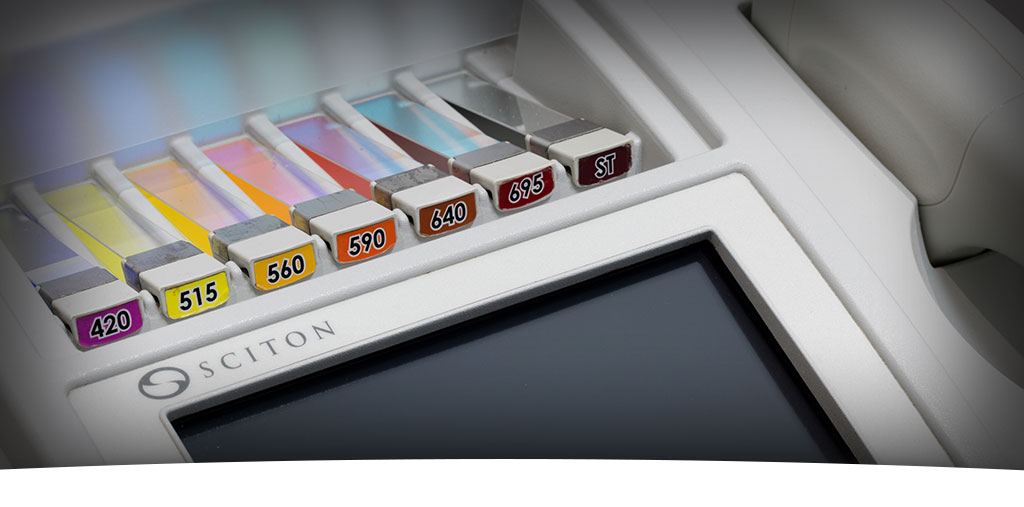
Intense pulsed light (IPL)
IPL (intense pulsed light) treatment, also known as photorejuvenation, is a non-invasive method used to achieve permanent hair removal, reduce age spots, remove visible blood vessels, and improve skin texture.
IPL works by emitting powerful, broad-spectrum pulses of light that are selectively absorbed by the targeted skin structures. Depending on the treatment objective, the wavelength can be adjusted to specifically target dark pigment (during hair removal) or blood vessels (to reduce redness or visible vessels).
What conditions can be treated with intense pulsed light (IPL)?
- Pigmented lesions (e.g., freckles, lentigo)
- Vascular lesions (e.g., small blood vessels)
- Acne
- Skin firmness
- Uneven skin texture
- Unwanted hair
Photorejuvenation
Photorejuvenation is a skin treatment to reverse the effects of skin aging. It evens out the complexion and firms the skin by stimulating and regenerating collagen production and restructuring existing fibres.
To achieve this effect, the light heats the skin, which sometimes creates small thermal lesions although without damaging the skin. The heat created in the epidermis or dermis (depending on the treatment) acts on the pigments and tiny blood vessels (microcapillaries) and activates the fibroblasts, the cells that generate new collagen.
Several technologies can be used to administer photorejuvenation treatments, including intense pulsed light, laser, and radiofrequency.
Here are some intense pulsed light devices used for photorejuvenation treatments.
They are based on the photothermal effect, i.e., the light emitted is transformed into heat energy once it reaches its target, namely the chromophore in the skin (melanin, oxyhemoglobin, water, or several of these targets at once).
𝐃𝐈𝐃 𝐘𝐎𝐔 𝐊𝐍𝐎𝐖 ?
IPL works by emitting powerful, broad-spectrum pulses of light that are selectively absorbed by the targeted skin structures. Depending on the treatment objective, the wavelength can be adjusted to specifically target dark pigment (during hair removal) or blood vessels (to reduce redness or visible vessels).
Side effects of photorejuvenation treatments
If photorejuvenation is performed according to applicable safety measures and at an appropriate setting, the side effects are generally temporary and quite mild.
Some people are more sensitive and have skin that is more reactive than others; this is very difficult to predict without first doing a test or even before completing the first session.
Here is a general description of the possible side effects of photorejuvenation:
Hyperpigmentation is an accentuation of the skin’s pigmentation caused by an excess of pigment in a given area, causing skin to appear “darker” in places.
During photorejuvenation treatments, hyperpigmentation can occur in clients who have previously been treated for a pigment or vascular disorder. Clients can expect to see a temporary accentuation of their pigment spots; after this, however, the complexion will appear generally brighter and the skin texture more uniform.
No topical anesthesia is required. The treatments are provided by technicians specialized in advanced aesthetic treatments.
Acne
We can use IPL to treat all parts (areas) affected by acne, in clients of all ages.
This type of treatment is quick and painless and requires no anesthesia. A gel will be applied on the area to be treated, and you will be given protective glasses to wear. After the session, a cold compress and aloe gel will be applied to soothe the skin, followed by sunscreen. You can resume your normal activities immediately after treatment.
How does IPL work on acne-prone skin?
The device has several filters that can be used during treatment to reach different depths beneath the epidermis. The filter chosen by the technician will determine the wavelength that will reach the different layers of the skin. For best results, three filters must be used:
- Blue light (filter 420): destroys the acne bacteria; at this depth, the light is absorbed as far as the sebaceous glands.
- Yellow light (filter 560): reduces the inflammation and redness that accompany acne; restores skin’s healthy glow.
- Red light (filter 590): accelerates skin’s natural healing process.
In general, you will need 4-6 sessions at two-week intervals for best results. You will also need to follow a treatment regimen at home. You will see faster results if you work together with your esthetician.
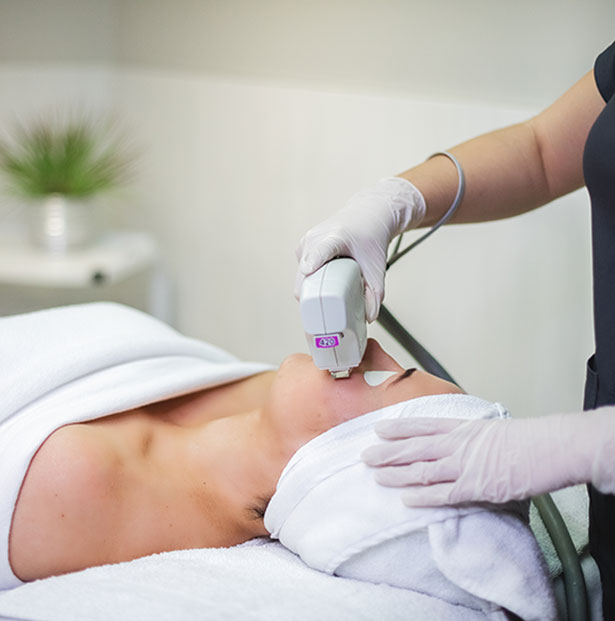
Pigmented
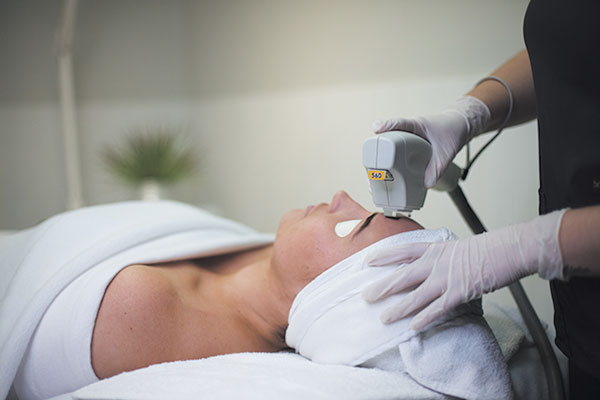
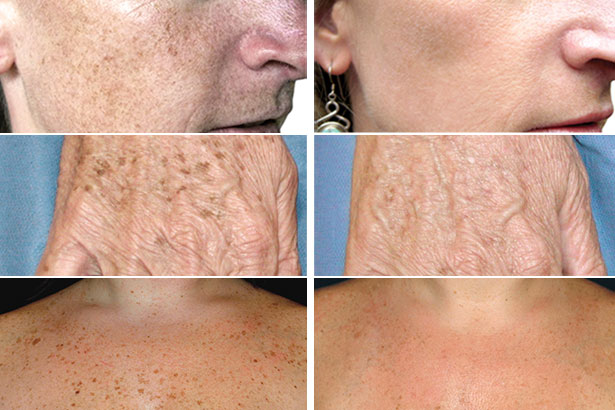
Vascular
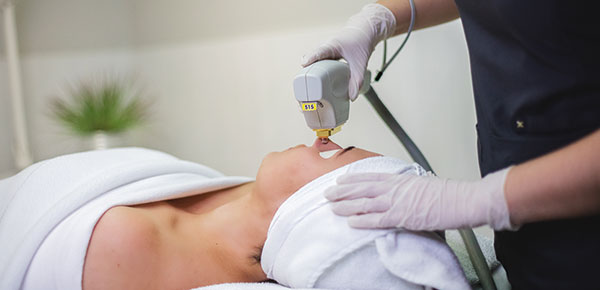
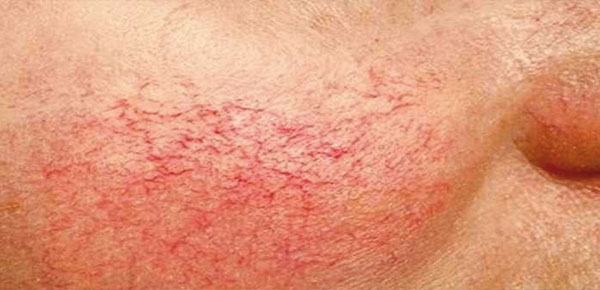
Unwanted hair

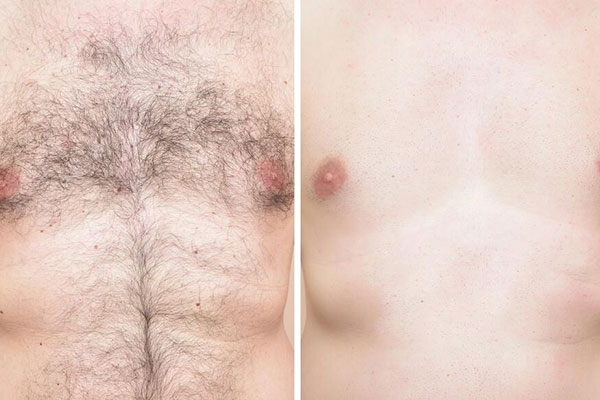
Financing available.
